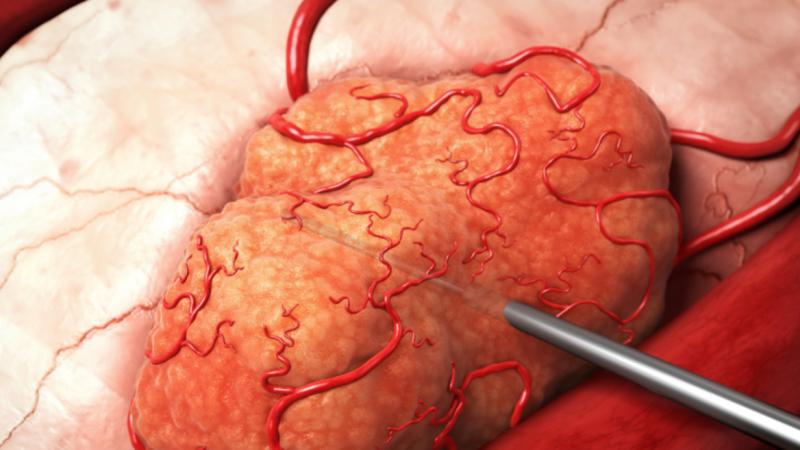What are noncancerous tumors?
Noncancerous tumors, also known as benign tumors, are abnormal growths of cells that do not have the ability to invade nearby tissues or spread to other parts of the body. Unlike cancerous tumors (malignant tumors), benign tumors are usually localized and do not have the potential to metastasize. While benign tumors are not cancerous, they can still cause health issues depending on their size and location.
Here are some key characteristics of noncancerous tumors:
Limited Growth and Expansion:
- Benign tumors tend to grow slowly and are typically encapsulated, meaning they have a well-defined border or outer layer. Unlike malignant tumors, they do not infiltrate nearby tissues.
Cellular Resemblance to Normal Cells:
- Cells within benign tumors closely resemble normal cells in terms of structure and function. The cells do not exhibit the abnormal features often seen in cancer cells.
Localized:
- Benign tumors are localized to a specific area of the body. They do not spread to distant organs or tissues through the bloodstream or lymphatic system.
Low Risk of Recurrence:
- Once a benign tumor is removed, there is a low risk of recurrence in the same location. This is because the tumor does not have the ability to invade surrounding tissues or seed cancer cells in other parts of the body.
Usually Not Life-Threatening:
- In general, benign tumors are not life-threatening. They are often discovered incidentally during medical examinations or imaging studies conducted for unrelated reasons.
Compression of Surrounding Tissues:
- Depending on their size and location, benign tumors can exert pressure on adjacent tissues and organs. This compression can lead to symptoms and may be a reason for medical intervention.
Types of Benign Tumors:
- There are various types of benign tumors, and they can arise from different types of tissues. Some common types include adenomas (glandular tumors), fibromas (connective tissue tumors), lipomas (fatty tumors), and neuromas (nerve tissue tumors).
Treatment Options:
- Treatment for benign tumors may involve surgical removal, especially if the tumor is causing symptoms, growing rapidly, or if there is concern about its potential impact on nearby structures. Unlike cancer treatment, treatments such as chemotherapy or radiation therapy are typically not used for benign tumors.
It's important to note that while benign tumors are generally not cancerous, their presence can still cause health issues. The decision to treat a benign tumor depends on factors such as its size, location, and potential impact on surrounding tissues. Medical professionals may recommend monitoring, removal, or other interventions based on the specific characteristics of the benign tumor and its potential impact on the individual's health.
Sure, here is a detailed analysis of the definition, characteristics, causes, risk factors, diagnosis, and treatment of noncancerous tumors:
Definition and characteristics of noncancerous tumors: Understanding their nature and behavior
Noncancerous tumors, also known as benign tumors, are abnormal growths of cells that do not invade surrounding tissues or spread to distant sites. They differ from cancerous tumors in their localized nature and lack of metastatic potential. Unlike cancerous tumors, noncancerous tumors do not pose a direct threat to life but may cause discomfort, pain, or functional impairments depending on their location and size.
Characteristics of Noncancerous Tumors:
Localized growth: Noncancerous tumors remain confined to their original location and do not invade surrounding tissues.
Lack of metastasis: Noncancerous tumors do not spread to distant sites through the bloodstream or lymphatic system.
Slow growth: Noncancerous tumors typically grow slowly over time, often taking years or even decades to reach a noticeable size.
Well-defined borders: Noncancerous tumors usually have distinct boundaries, separating them from surrounding normal tissues.
Normal cell appearance: Noncancerous tumors are composed of cells that closely resemble the normal cells from which they originated.
Causes and risk factors of noncancerous tumors: Exploring the underlying mechanisms and potential influences
The exact causes of noncancerous tumors are not fully understood, but various factors are thought to contribute to their development:
Genetic predisposition: Certain genetic mutations or inherited conditions can increase the risk of developing noncancerous tumors.
Hormonal imbalances: Hormonal imbalances, particularly estrogen levels, are associated with certain types of noncancerous tumors, such as uterine fibroids.
Chronic inflammation: Chronic inflammation, caused by infections, autoimmune diseases, or other factors, can promote the formation of noncancerous tumors.
Lifestyle factors: Certain lifestyle factors, such as obesity, lack of physical activity, and smoking, may increase the risk of developing noncancerous tumors in specific locations.
Diagnosis and treatment of noncancerous tumors: Identifying methods for detection and management
Diagnosing noncancerous tumors often involves a combination of physical examination, imaging tests, and biopsies. The specific diagnostic approach depends on the location and suspected type of noncancerous tumor.
Physical examination: Physicians may palpate (feel) the suspected tumor to assess its size, consistency, and location.
Imaging tests: Imaging tests such as X-rays, ultrasounds, CT scans, and MRIs can visualize the tumor and provide information about its size, shape, and location.
Biopsies: In some cases, a biopsy may be performed to remove a small sample of tumor tissue for microscopic examination. This allows pathologists to confirm the diagnosis and determine the type of noncancerous tumor.
Treatment for noncancerous tumors depends on the type, location, and size of the tumor, as well as the patient's overall health. Treatment options may include:
Active surveillance: For noncancerous tumors that are small and asymptomatic, active surveillance may be recommended. This involves regular monitoring with imaging tests to ensure the tumor is not growing or causing problems.
Medications: For certain types of noncancerous tumors, medications may be used to shrink the tumor or control symptoms.
Surgery: Surgery is the most common treatment for noncancerous tumors that are causing symptoms or have a risk of becoming malignant. The goal of surgery is to completely remove the tumor while preserving surrounding healthy tissues.













